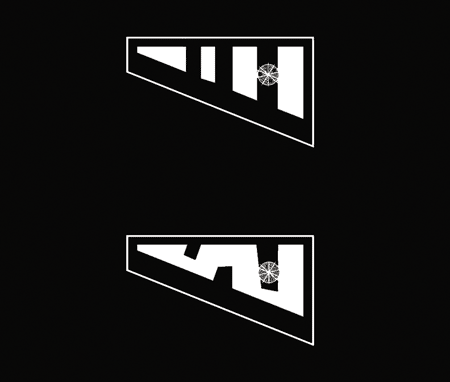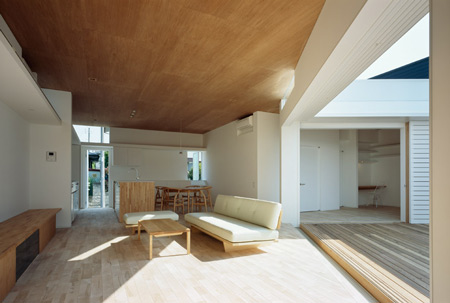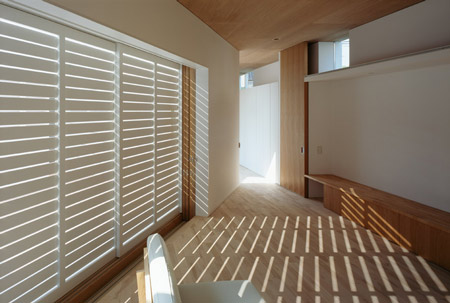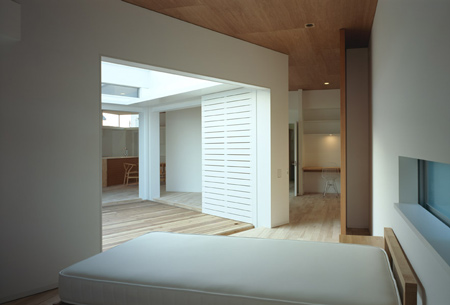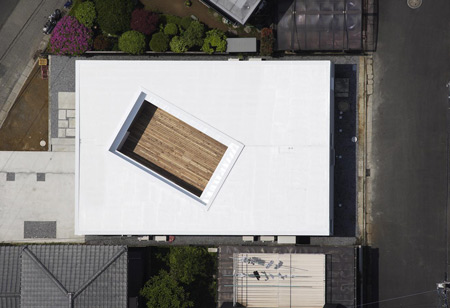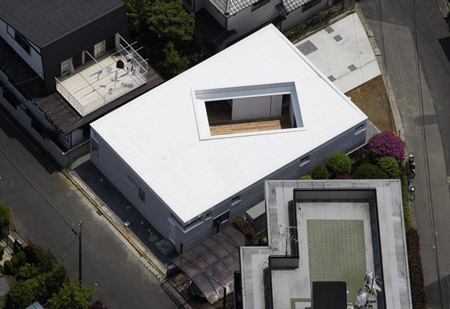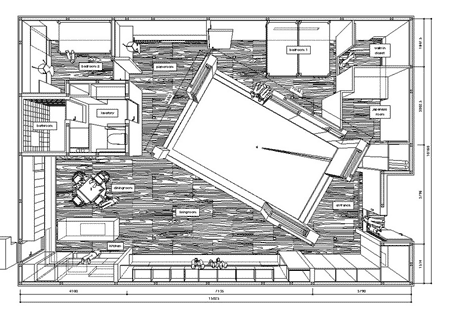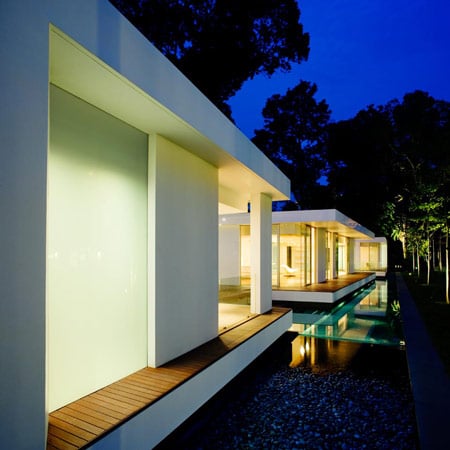
Singapore studio Ministry of Design have completed a single-storey house that zig-zags across its triangular site in Singapore.
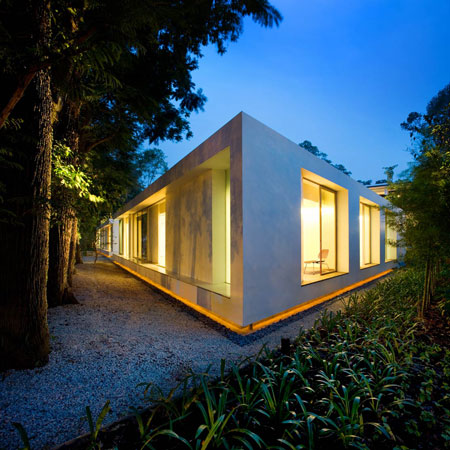
Called Lien Residence, the house twists to avoid an existing tree, creating courtyard spaces that are sheltered from the weather but admit light and breezes to the interior and basement level.
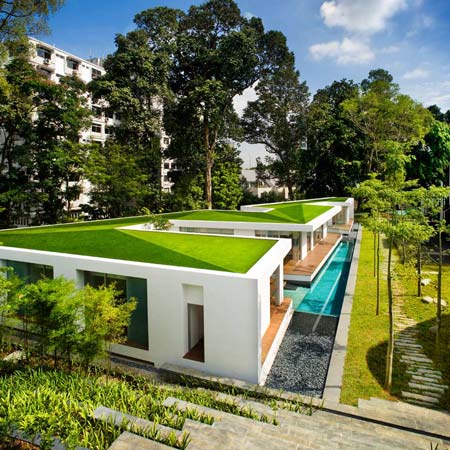
The building is split into three sections: an entertainment zone, a family zone and a private master zone.
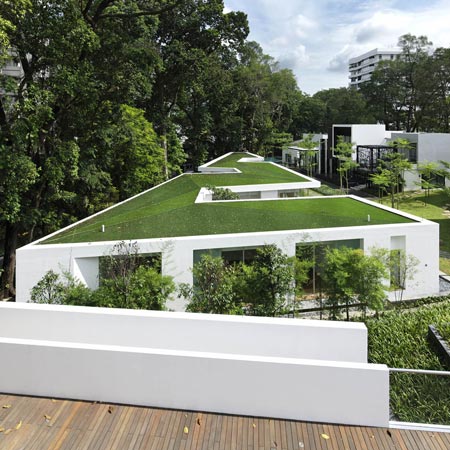
The house also features a diagonally-patterned planted roof.
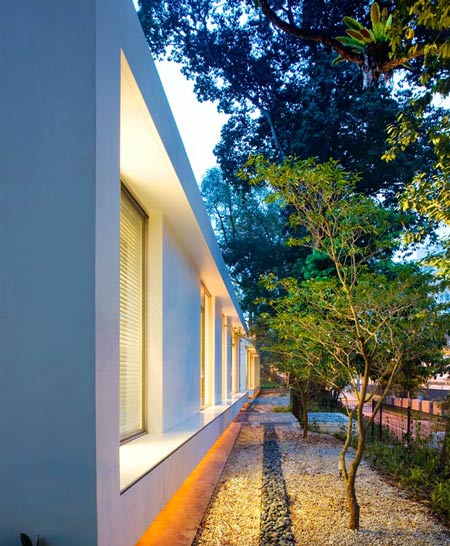
More stories about Ministry of Design on Dezeen:
Face to Face (January 2010)
Leo Burnett Office (October 2009)
Photographs are by Edward Hendricks and Patrick Bingham-Hall.
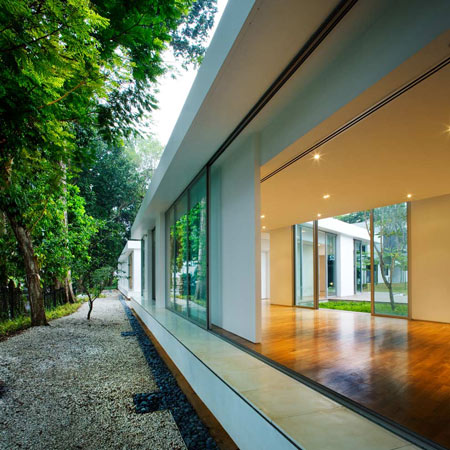
Here is some more information from Ministry of Design:
–
Lien Residence by Ministry of Design
Architecture (with PAA) + Interior Architecture 600 sq m Singapore 2009. Built
Returning to the romance of the single-storey bungalow house, this zig-zag house acquires its unique form via a series of formal maneuvers around a mature tree located on its long and triangulated sliver of land.
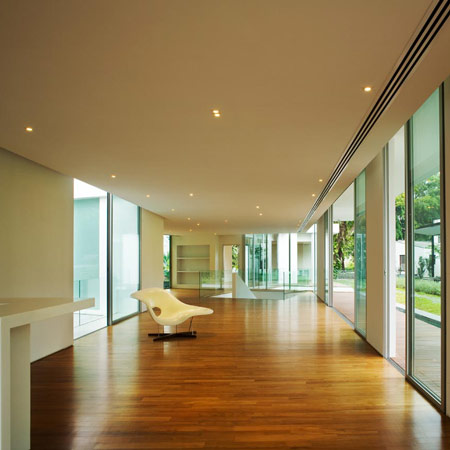
Tropically acclimated to the region, the building’s twisting form creates “in-between” spaces which provide shelter from nature’s harsh elements and simultaneously allow for cross ventilation and filtered light. Courtyards, captured by the turning of the twisted building form, bring light into the basement service areas.
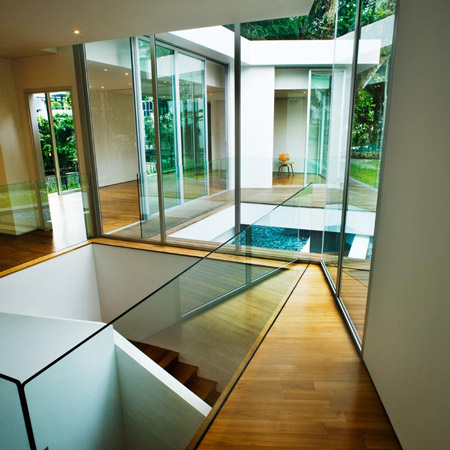
Internal corridors serve as breezeways between air-conditioned and naturally cooled areas.
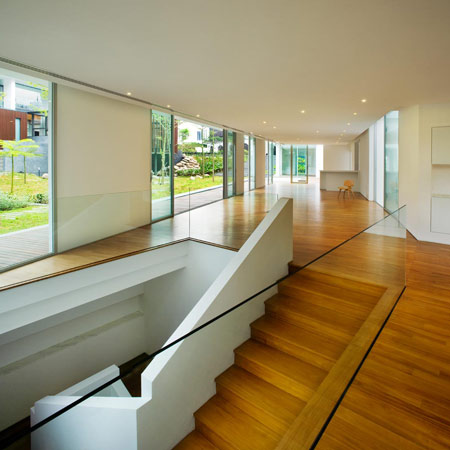
Slightly lofted over the ground, each of the building’s three Miesian inspired wings house an entertainment zone, a family zone and a private master zone.
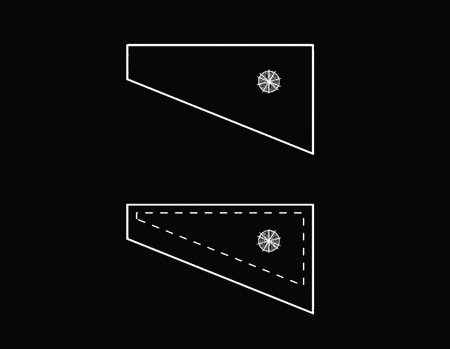
Seen as a seamless singular form, the building reads as both sheltering building as well as abstracted sculpture.
